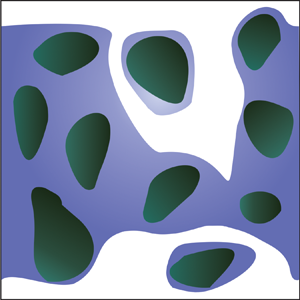Article contents
Macroscopic model for generalised Newtonian inertial two-phase flow in porous media
Published online by Cambridge University Press: 30 August 2023
Abstract

A closed macroscopic model for quasi-steady, inertial, incompressible, two-phase generalised Newtonian flow in rigid and homogeneous porous media is formally derived. The model consists of macroscopic equations for mass and momentum balance as well as an expression for the macroscopic pressure difference between the two fluid phases. The model is obtained by upscaling the pore-scale equations, employing a methodology based on volume averaging, the adjoint method and Green's formulation, only assuming the existence of a representative elementary volume and the separation of scales between the microscale and the macroscale. The average mass equations coincide with those for Newtonian flow. The macroscopic momentum balance equation in each phase expresses the seepage velocity in terms of a dominant and a coupling Darcy-like term, a contribution from interfacial tension effects and another one from interfacial inertia. Finally, the expression of the macroscopic pressure difference is obtained in terms of the macroscopic pressure gradient and body force in each phase, and interfacial terms that account for capillary effects and inertia, if present when the interface is not stationary. All terms involved in the macroscale equations are predicted from the solution of adjoint closure problems in periodic representative domains. Numerical predictions from the upscaled models are compared with direct numerical simulations for two-dimensional configurations, considering flow of a Newtonian non-wetting fluid and a Carreau wetting fluid. Excellent agreement between the two approaches confirms the pertinence of the macroscopic models derived here.
- Type
- JFM Papers
- Information
- Copyright
- © Universidad Autónoma Metropolitana, Universidad Nacional Autónoma de México, and CNRS, 2023. Published by Cambridge University Press
References
- 3
- Cited by





